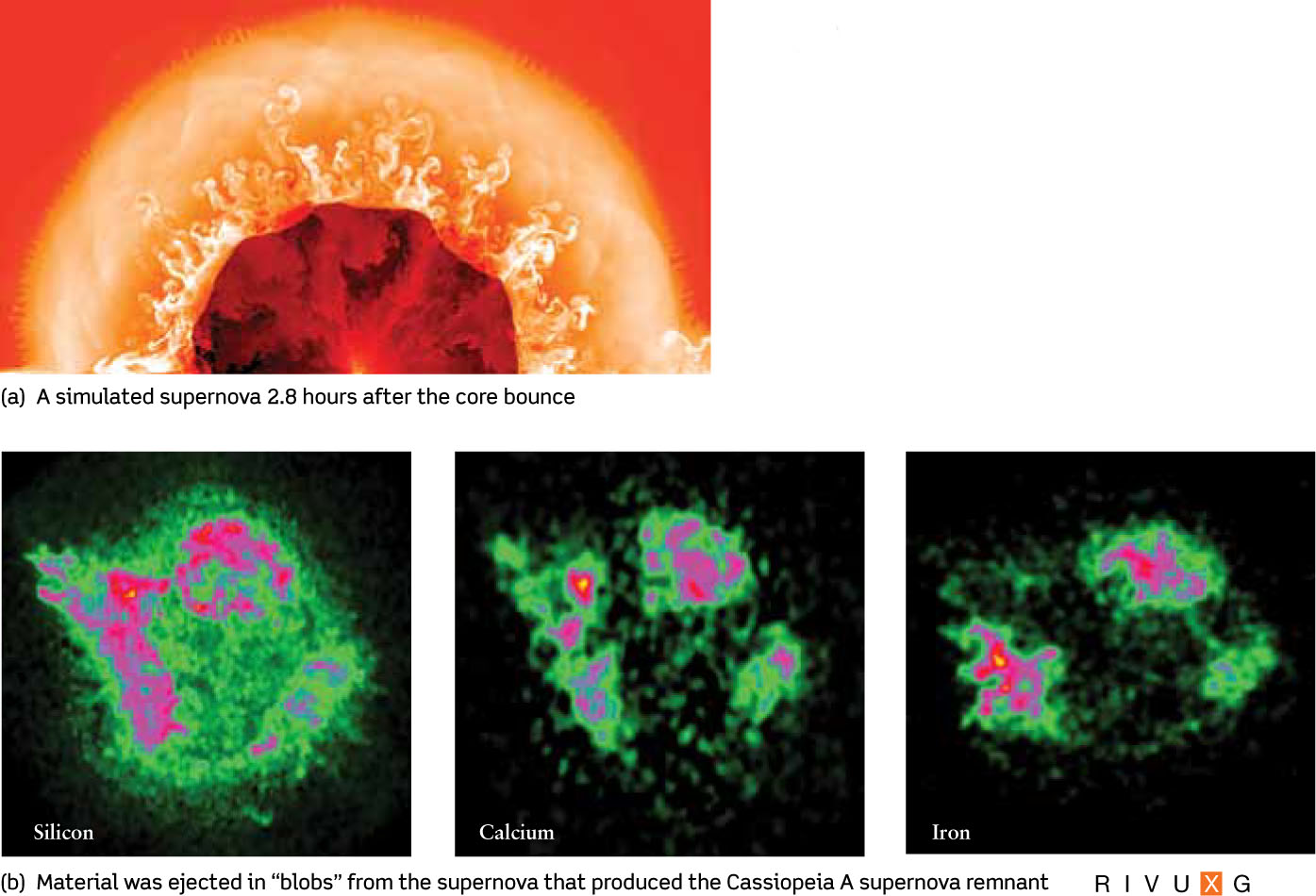
Figure 20-15:  Turbulence in a Core-Collapse Supernova (a) This image from a supercomputer simulation shows a cross section of a massive star 2.8 hours into the supernova explosion. Density increases from black through red and orange to white. The darker inner region of the core is lower density because its heavier elements have been ejected into the outer layers. These dense metals appear almost as white flames as they undergo turbulence on the outermost shells of helium and hydrogen. The simulated supernova is SN 1987A. (b) Turbulence causes material to be ejected from the supernova in irregular “blobs,” as shown by these images of the supernova remnant Cassiopeia A. Each image was made using an X-ray wavelength emitted by a particular element. (Figure 18-26 shows a false-color image of Cassiopeia A made using visible, infrared, and X-ray wavelengths.)
Turbulence in a Core-Collapse Supernova (a) This image from a supercomputer simulation shows a cross section of a massive star 2.8 hours into the supernova explosion. Density increases from black through red and orange to white. The darker inner region of the core is lower density because its heavier elements have been ejected into the outer layers. These dense metals appear almost as white flames as they undergo turbulence on the outermost shells of helium and hydrogen. The simulated supernova is SN 1987A. (b) Turbulence causes material to be ejected from the supernova in irregular “blobs,” as shown by these images of the supernova remnant Cassiopeia A. Each image was made using an X-ray wavelength emitted by a particular element. (Figure 18-26 shows a false-color image of Cassiopeia A made using visible, infrared, and X-ray wavelengths.)
 Turbulence in a Core-Collapse Supernova (a) This image from a supercomputer simulation shows a cross section of a massive star 2.8 hours into the supernova explosion. Density increases from black through red and orange to white. The darker inner region of the core is lower density because its heavier elements have been ejected into the outer layers. These dense metals appear almost as white flames as they undergo turbulence on the outermost shells of helium and hydrogen. The simulated supernova is SN 1987A. (b) Turbulence causes material to be ejected from the supernova in irregular “blobs,” as shown by these images of the supernova remnant Cassiopeia A. Each image was made using an X-ray wavelength emitted by a particular element. (Figure 18-26 shows a false-color image of Cassiopeia A made using visible, infrared, and X-ray wavelengths.)
Turbulence in a Core-Collapse Supernova (a) This image from a supercomputer simulation shows a cross section of a massive star 2.8 hours into the supernova explosion. Density increases from black through red and orange to white. The darker inner region of the core is lower density because its heavier elements have been ejected into the outer layers. These dense metals appear almost as white flames as they undergo turbulence on the outermost shells of helium and hydrogen. The simulated supernova is SN 1987A. (b) Turbulence causes material to be ejected from the supernova in irregular “blobs,” as shown by these images of the supernova remnant Cassiopeia A. Each image was made using an X-ray wavelength emitted by a particular element. (Figure 18-26 shows a false-color image of Cassiopeia A made using visible, infrared, and X-ray wavelengths.)(a: Konstantinos Kifonidis/Science Photo Library/Science Source; b: U. Hwang et al., NASA/GSFC)